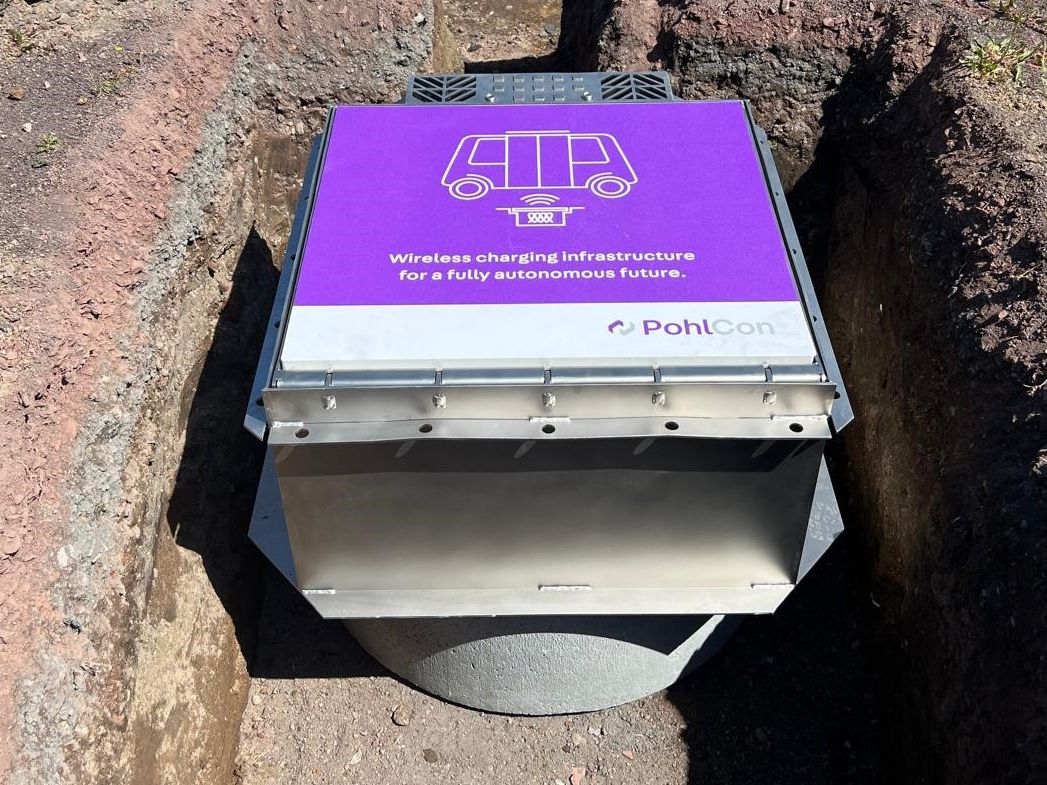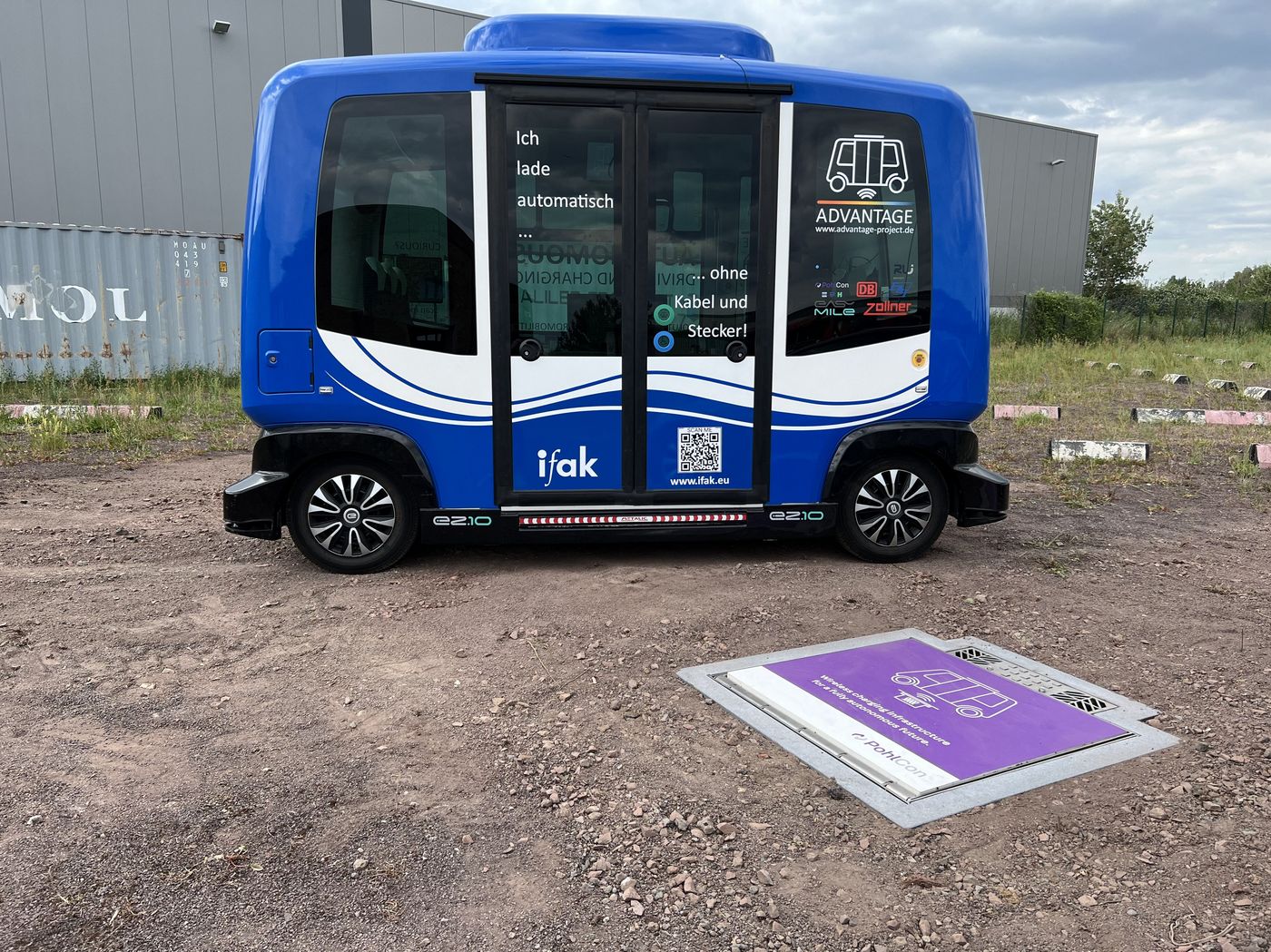The Wireless Charging Protection System (WCPS) is a tried-and-tested system that is already used in some production halls and logistics companies. It enables driverless transport systems (AGVs) and autonomous mobile robots (AMRs) to charge during operation. These machines are supplied with energy without having to interrupt their actual tasks and drive to a special charging zone.
A well thought-out use of WCPS therefore contributes to greater efficiency, as there are no breaks for the robots to recharge and the space for charging zones can be used for other purposes.
In the ADVANTAGE project of the Institute for Automation and Communication (ifak), this concept was transferred to local public transport under the leadership of Dr. Maxim Nesterov.
We were able to participate as a cooperation partner with our know-how and our WCPS technology in this project funded by the Federal Ministry of Economics and Climate Protection (BMWK).

Technology for the future
Electromobility represents the future of modern transportation, with autonomous driving playing an increasingly important role. Modern transport planning already envisages self-driving shuttle buses, which will provide a reliable and flexible transportation option that is available around the clock. This is likely to play an important role in rural areas in particular.
In addition to advantages in terms of operational safety on the road, effective traffic control and energy-efficient driving, reliability in operations can also be ensured in the long term. In the medium term, a suitable technology with the potential to open up new transport networks is now available to counteract a worsening personnel situation. This will also create an attractive option for drivers who are currently dependent on individual transportation.
However, this change also requires an innovative solution concept for an efficient and sustainable energy supply. A contactless charging infrastructure should therefore be a fundamental component of fleet electrification in autonomous local public transport. It would enable an uninterrupted and decentralized energy supply for vehicles. This is essential to ensure constant operation and avoid unnecessary journeys to charging zones away from the actual route network.

Rethinking public transportation
The federally funded ADVANTAGE project, which aims to enable automatic and contactless charging of autonomous public transport shuttles, also took into account a traffic-centric infrastructure concept that is to be implemented flush with the ground at stops. This allows the charging process to be parallelized at stops along the traffic route.
The flush-mounted charging infrastructure unit developed by PohlCon to accommodate the charging technology and power electronics supports the spread of public transport fleet electrification in public spaces and ensures a smooth energy transfer.
On June 25, 2024, the project was completed at the Galileo test field in Magdeburg.
At the demo day, the successful results were presented and demonstrated using the example of an automated, electric shuttle bus with the participation of all project partners.
The shuttle bus positioned itself fully autonomously above the charging station integrated into the ground using the vehicle positioning and Robot Operating System (ROS) researched in the project. It was then charged using the 11 kW inductive charging system, which was developed in collaboration with our partners.
PohlCon project manager

Dennis Thiele
Team Lead Wireless Charging Infrastructure
+49 30 68283-111
dennis.thiele@pohlcon.com
PohlCon GmbH Hauptsitz
Nobelstraße 51
12057 Berlin
